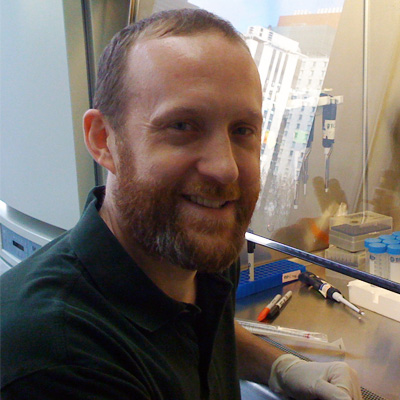Solving the Obesity Epidemic with a bottom-up approach
According to the Center for Disease Control and Prevention, 35.1% of adults over the age of 20 are obese, and the number is on the rise. The obesity epidemic is, in fact, the leading public health concern of modern society as it leads to numerous diseases affecting both adults and children. Despite the importance of fat in human disease, our understanding of the regulation of fat mass is extremely limited. Dr. Matt Rodeheffer, Associate Professor for the Section of Comparative Medicine and Molecular, Cell, and Developmental Biology at Yale University, is elucidating the cellular and molecular mechanisms that regulate fat mass and contribute to the development of diseases associated with obesity, such as diabetes, cancer, and heart disease. Therefore, his research helps understand why the population is becoming so obese, and furthermore, how we can prevent obesity in the future.
Dr. Rodeheffer’s education-centric research lab is dominated by “dedicated graduate students and overachieving undergraduates.” Therefore, in a collaborative effort, he and his team are making strides in uncovering why obesity has become so prevalent in modern society. Because obesity and metabolic disease arise from complicated physiological interactions, his team is especially dedicated to understanding how fat mass is regulated within the body. Although this approach is time consuming and costly, it yields more relevant discoveries than solely studying isolated cells outside the body, which has been the dominant method over the last several decades. In fact, in the last few years, Dr. Rodeheffer and his team have developed a host of novel methods and materials for studying fat in the body that they are now applying to understand how diet, sex, and age affect the growth and maintenance of fat.
Current research includes:
-
Fat Stem Cells: As fat cells are post-mitotic, new fat cells are produced by the proliferation and differentiation of fat stem cells. However, the identity of these stem cells remained elusive until recently, when Dr. Rodeheffer’s lab identified the fat stem cells. They have since characterized the cellular pathway of adipogenesis in vivo and have identified a molecular pathway that leads to increased fat cells only in obesity. These findings open the door for their current studies of how fat cells form during normal development and how the food we eat can lead to obesity.
-
The Fat Cell Setpoint: Despite the dynamic nature of fat mass, the number of fat cells is tightly regulated. During normal development, a ‘setpoint’ of fat cell number is established. In obesity, both the size and the number of fat cells increase, establishing a new, higher setpoint. When weight is lost, the fat cells shrink, but the number of fat cells remains increased, potentially making it harder to maintain weight loss. Dr. Rodeheffer is trying to understand how to establish a lower setpoint, and furthermore, if it is possible to decrease a setpoint after it has already been established.
-
Obesity Rates: Dr. Rodeheffer and his team are currently working to determine what factors in our diets contribute to the recent rise in obesity rates. If there are specific components of the diet that are leading to increased fat mass, diabetes and heart disease, his research may lead to new dietary recommendations to prevent obesity as well as novel drugs for treating obesity and other diseases associated with obesity.
-
Novel Tools: Dr. Rodeheffer is developing an entire system of assays and novel tools to use to study the regulation of fat mass in vivo. This new approach is helping to understand what the signals of fat are and how our diet and activities affect those signals.

Bio
Dr. Matt Rodeheffer is a third generation biologist; both his grandfather and father were biologists. Therefore, as a child, he was always surrounded by the sciences. For instance, he would help in some studies in his father’s department, like going out to trap, tag and release sturgeon for research. As he grew older, he became more excited by architecture and psychology due to the empirical yet creative combination intrinsic in both disciplines. Once he entered his undergraduate career, however, the biological sciences called to him and he never looked back.
Dr. Rodeheffer became interested in obesity because his childhood involved two important relationships surrounding diet and health. While his sister struggled with anorexia, his best friend was overweight. Dr. Rodeheffer noticed that while his friend didn’t eat more than he did and his sister was supported by his loving parents, there was immense variety in the spectrum of weight and health. Although each of these conditions was considered largely psychological at the time, Dr. Rodeheffer always believed there were fundamental biological underpinnings at each end of the weight spectrum. While he didn't know at the time the significance of his belief, these early experiences led him to a career centered on understanding how fat mass is regulated.
In his free time, aside from research, Dr. Rodeheffer enjoys cycling now that he is unable to run as he did competitively in high school and college. His passion for science can only be trumped by his enthusiasm for his family. Much of his time is spent creating fun opportunities for his two daughters to engage in their own passions. For instance, he recently installed a synthetic ice rink in his basement so he and his daughter could work on her hockey moves.
Websites: http://medicine.yale.edu/lab/rodeheffer/index.aspx http://bbs.yale.edu/people/matthew_rodeheffer.profile


